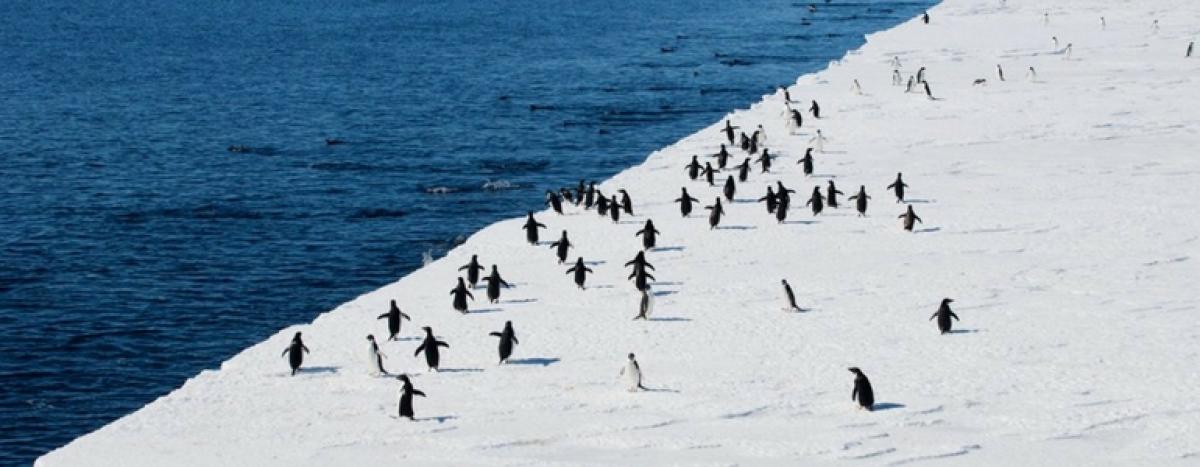Live
- Bringing joy to MPP schoolchildren
- Contaminated food worth Rs 52,000 disposed
- BJP MLA warns of protest over Panchamasali reservation demand
- Sunspots and solar flares can affect Earth’s surface
- Discom staff neglect jungle clearance at poles
- Experts at COP29 urge India to tackle short-lived climate pollutants
- AGP inducts new locomotive
- Visakhapatnam: 31-year-old attacks girl for refusing his love
- MyVoice: Views of our readers 15th November 2024
- NWKRTC embraces digital payments to enhance passenger experience
Just In

Strong winds in eastern Antarctica are causing ice to melt in the West Antarctic Peninsula, on the opposite side of the white continent located as far away as 6,000 km, according to a study published in Australia on Tuesday.
Sydney: Strong winds in eastern Antarctica are causing ice to melt in the West Antarctic Peninsula, on the opposite side of the white continent located as far away as 6,000 km, according to a study published in Australia on Tuesday.
The study, published in Nature Climate Change, found that winds in East Antarctica can generate sea disturbances that spread around the continent at 700 kph via a type of ocean wave known as the Kelvin wave, reports Efe news.
According to the study, when the waves encounter the underwater topography of the peninsula they push the warmer water toward the ice along the coast, near the warm current that goes around the South Pole.
"It is this combination of available warm water offshore, and a transport of this warm water onto the shelf, that has seen rapid ice shelf melt along the West Antarctic sector over the past several decades," lead researcher Paul Spence said in a statement by the University of New South Wales.
"We always knew warm water was finding its way into this area but the precise mechanism has remained unclear," he added.
The changes in the Antarctic coastal winds, particularly along East Antarctica, could also be related to climate change, Spence said, adding that the these changes could increase water temperatures by up to 1 degree Celsius at the depth of the floating ice shelves along the peninsula.
Spence underlined the implications that small rises in temperature could have on the ice sheets and warned that the melting in Western Antarctica could contribute to an increase in the sea level by a meter by the end of the century, at the current rate of emissions.
The study comes a week after it was revealed that one of the largest icebergs, of around 5,800 sq km, had broke off from the Larsen C ice shelf of the Antarctic Peninsula.

© 2024 Hyderabad Media House Limited/The Hans India. All rights reserved. Powered by hocalwire.com







